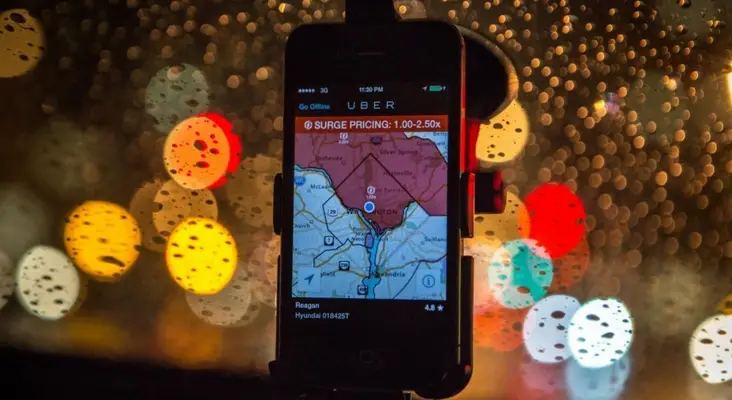
What is surge pricing?
Surge pricing happens when there is a high demand for Uber cars, meaning that there is a large amount of people who are trying to request an Uber. What surge pricing does is apply a multiplier on every fare, therefore raising their prices. Surge pricing can happen during any day of the week, but it is most common on the weekends. During the week surge pricing is likely to occur at rush hour, and on the weekends it may be enacted during the late hours of the night for people going out and coming home from bars and similar venues. Other times when surge pricing might be enacted is on holidays or during bad whether when a lot of people are looking for rides.
What does surge pricing look like?

If you are requesting an Uber during a surge period, before your request is confirmed a screen will appear on your Uber app that will inform you about the current surge. When the surge is above 2.0x the normal fare, users will have to manually type the surge number in order to acknowledge that they are aware of the price they will be paying. Uber does this so no users are surprised when they see their fare was more expensive than usual.
How long do Uber surges last?
A study from Northeastern University found that Uber surge pricing can often last as little as five minutes. During this study researchers created over 40 Uber accounts and hailed cars in Manhattan and San Francisco over the course of a month. What they found was that the surge pricing lasted for a short period many times, and the surge pricing area was sometimes surprisingly small as well, in Manhattan especially. The study suggested that passengers wait-out surges rather than agree to pay higher prices.
What other companies use surge pricing?
Lyft, Uber’s top competitor, also uses surge pricing, and calls it “PT.” The main difference between Uber and Lyft’s surge pricing is that with Lyft, the drivers are not aware when there is a surge. The Lyft surge area is also a lot smaller than Uber’s. In general it was found that Uber tends to have higher surge rates than Lyft.
Besides rideshare companies, there are also other types of companies that use strategies similar to surge pricing. For example, airlines use similar tactics to sell tickets, and hotels use higher prices to book rooms especially during the busy seasons.
Uber did not invent the idea of charging people a higher price according to demand, but the main difference between Uber and the other companies using similar tactics is that Uber is transparent about how much you are going to pay.
Why Surge Pricing is Controversial:
Surge pricing can be beneficial because it helps to meet the high demand of people needing cars by giving drivers an incentive to turn on their apps, but it is also a controversial topic. Sometimes, the surge prices can be extreme, and it can cost hundreds of dollars to make a journey that normally would cost less than $20. Ridesharing companies like Uber also tend to enact surge pricing when people need cars the most, during dangerous weather conditions such as snow storms and torrential downpours. This makes it harder for people to travel during emergencies unless they are willing to pay the extreme price. Uber has started to cut down on surge pricing during emergencies after many people were disgruntled by their lack of compassion but it seems like there are still plenty of times when people need a ride in an emergency and find themselves faced with an exorbitant bill.
Felicia is an intern at Unleashed, LLC. She is from upstate NY, and is currently pursuing a Marketing degree at Bentley University. One day she hopes to travel the world and visit every continent.

